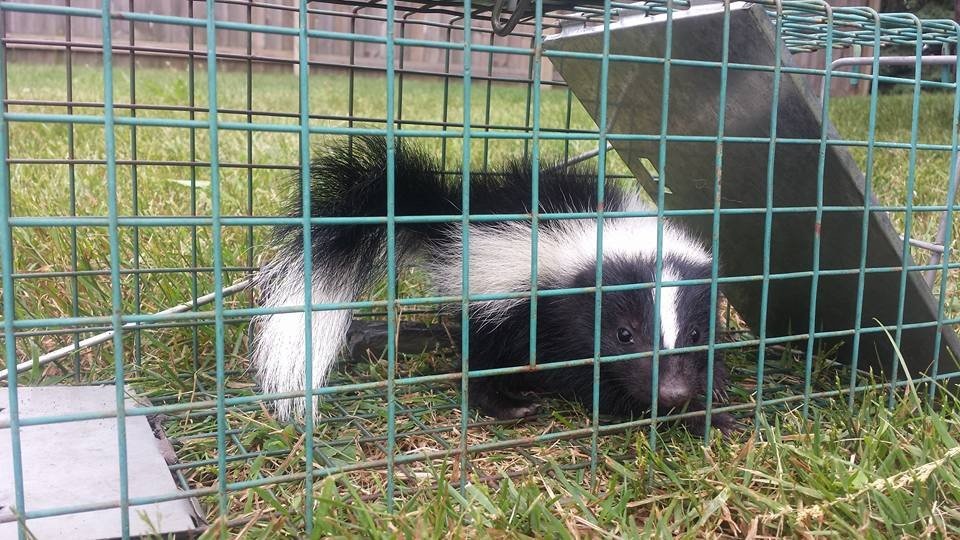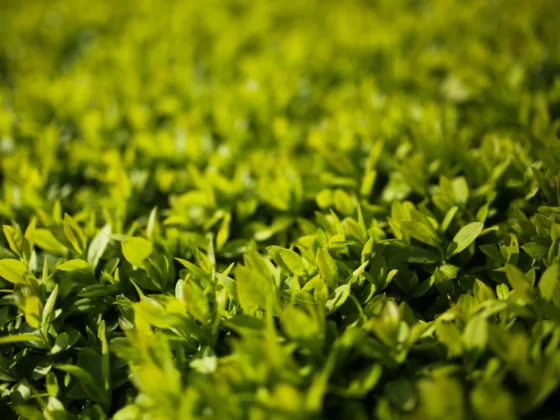Table of Contents Show
Having the perfect backyard is something every homeowner fantasizes about. While managing all the basics, from landscaping to fertilizing to watering and mowing, is fairly straightforward, there is one aspect that poses a challenge for every property owner – pests.
Whether it is insects or wildlife, pests are a terrible menace that plague homeowners. Depending on the pest, the damage to your backyard may differ significantly.
Some pests cause minor inconveniences, like leaving patches of dead lawn, while others cause significant damage like leaving numerous burrows, leaving your once beautiful backyard in ruins.
Every pest has its mannerism and how they affect your property. In this article, we will be looking at a few of these pests and the different ways in which you can identify them.

Skunks
Skunks may look cute, but they can do significant damage to your property for their size. These pesky creatures are definitely among those that you should look out for.
Skunks are small-sized creatures with black and white stripes on their bodies. Skunks and moles share similar characteristics in terms of digging, that is.
If your garden or lawn in your backyard has lots of holes in it, it may be a sign that a skunk has built a den nearby. Holes dug by skunks are small and shallow, so they are easily noticeable.
Skunks are nocturnal, and It is also more likely that you will smell one before actually seeing it. For more information on skunks visit howtogetridofskunk.com.
Read Also:
Moles
Moles are small-sized mammals with a pointed nose, tiny eyes, and an equally tiny body. In motion, they appear to use their wide front flipper-like limbs to swim through the ground. Moles prefer moist loamy soil where they can find worms easily.
They dig deep holes (tunnels) that can reach a depth of about 10 inches. They are usually active early in the morning or evening, so you can easily spot them.
If you see numerous volcano-like swellings scattered all over your backyard, it is a clear indication that you have a mole problem and may need expert help.
Armyworms
Armyworms are one-inch-long, smooth skin worms with varying body colors. Generally yellow, green, black, or dark brown, they feed on the grass around your yard, creating brown patches that may appear to be drought-stressed.
The uneven lawn coloration makes your backyard look anything other than beautiful. If you notice these brown patches, do well to use an insecticide that is helpful against them.
Mole Cricket
Mole crickets consume grass and their roots while burrowing underground. Unlike skunks and moles, their holes are not as visible and would take a considerable amount of effort in finding them.
The damage to your backyard is evident by raised burrows and patches of dead grass. You can quickly get rid of them by using insecticide.
Japanese Beetles
When it comes to identifying what is destroying your lawn, the majority of the time, you may have to rely on clues.
If you see adult Japanese Beetles in your garden, and later see that your lawn is dying, chances are you are dealing with lawn grubs.
These pesky larvae not only destroy your lawn by attacking and feasting on plant roots, but they also attract other backyard pests like skunks and moles and even armadillos. You can use nematodes to get rid of them easily.
Armadillos
If you have a garden or shrubs scattered in your backyard, armadillos may seek shelter there. Unlike skunks and moles that dig shallow holes, the armadillo digs multiple burrows about 8 inches in diameter and 15 feet in length.
Aside from having multiple deep holes in your yard, armadillos also use their long claws to uproot lawns and vegetation searching for food.
Armadillos are the only carriers of the bacteria that cause leprosy, adding to another reason to quickly find and relocate them if you have issues with an infestation.
Chinch Bugs
These leaf killers attack lawns and vegetation in sunny areas. They suck the nutrients out of individual grass plants and inject toxins that loosen the grass from the soil.
These insects are tiny, only 1/20 of an inch, spotting black bodies and shiny black wings. The easiest way to spot them and other bugs are to carry out a drench or floatation test.
You can dethatch your lawn to reduce their hiding places, and once found, you can eradicate them by applying insecticide all over your backyard.









